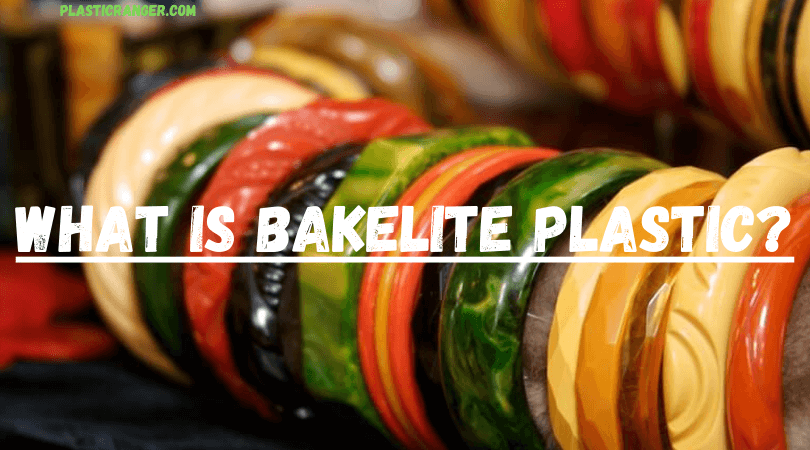Greetings, I would like to share some fascinating insights about Bakelite, the originator of modern plastics. This material served as a crucial precursor for contemporary plastics that we utilize daily, contributing to our lives today.
What is Bakelite Plastic?
Bakelite, a chemically resilient and non-melting plastic, was formed by blending phenol and formaldehyde, known as phenol-formaldehyde resin, obtained from coal tar and methanol, respectively, during that era.
Before delving deep into Bakelite plastic’s attributes, I would like to share how plastic has become integral to our lives, even when we don’t think about it that much.
From your toothbrush to the hairbrush, from the water bottle to the baby feeding bottle, the interior of your car to the interior of your office furniture, a component in your smartphone to a component in your laptop/computer, plastic is everywhere. They have influenced our lives in more ways than we can imagine.
However, it wasn’t always like that. Until 3-4 centuries ago, things were mostly made of metals like iron, steel, and aluminum. Before that, the situation was even weirder, everything was haywire, and things were made from bones, animal flesh, skin, ivory, wood, and plant fibers.
The History of Plastic and Bakelite
The earlier use of plastic was found in the 1700s(Closest estimations). Plastic substances like latex extracted from plants were being used for producing certain products.
After that, in the 1800s, the Industrial Revolution had just begun, and scientists and chemists started finding reliable alternatives.
Multiple variations to plastics were invented, like celluloid – from plant cellulose(still used) and Gallliath – made from milk protein and formaldehyde.
But then something happened that led me to write this piece :). In 1909 ( he got the U.S. patent for plastic this year), German chemist Leo Baekeland invented the first entirely synthetic plastic material (Bakelite).
Little did he know his invention was going to change the world.
In terms of properties, it was decades ahead of its predecessors.
Chemical and heat resistance with good electrical insulating properties are the main attributes that made Bakelite plastic a critical invention.
Those supremely ahead of their time features made Bakelite a much-needed force in the emerging automobile and electrical industries in the 1900s.
Bakelite plastic had all the modern features one would expect in a material found today; it was rugged, durable, and could be molded into various shapes.
Manufacturers soon realized the potential and used it to manufacture many products.
Customers flocked to buy products made from the newly invented plastic thanks to its aesthetics, sleekness, style, and premium feelings.
Engaging Read – What is Polystyrene? | The Definitive Guide
Is Bakelite Still Used Today?

Back in the day, when it was newly invented, it hit the market like a dump truck, and general customers fell in love with the products made by Bakelite.
Contrary to popular notion, It is still utilized in certain parts of automobiles and space shuttles thanks to its electrically insulating properties. It is also still used in industrial applications like switches and electrical appliances.
Although the use is minimal, advanced plastics have made their way to the manufacturing workshops with much better properties for producing new complex products.
Almost everything sold from 1920 to the early 1950s was made from bakelite material – telephones, clocks, pens, jewelry boxes, kitchenware, radios, lamps, desk sets, chess boards, billiard balls, poker chips, etc.
Bakelite plastic started a new consumer era with attractive and affordable goods previously reserved for the elites.
It also made an irreplaceable mark in the fashion industry with affordable jewelry and clothes.
Bakelite-made jewelry was lightweight, affordable, and intricate in design, and it also introduced plastics to the fashion world – nylon, spandex, polyester, etc., following the created legacy. The earliest found plastic dentures were also made from bakelite.
Change of Fortunes for Bakelite

Bakelite was a thermoset which means it can only be heated once (for optimal use), which in turn gives it its most beneficial property, electrical insulation; however, things started to quickly change in the 1950s when several other plastics (Mostly thermoplastics) came to the market and edged out bakelite.
Thermoplastics can be heated multiple times without significantly degrading properties, making them extremely popular among manufacturers.
That means bakelite material became extinct (almost) because of the same thing that made it famous.
Let’s dive into the general properties of bakelite material:
Key Properties
| Property | Value | Units |
| Mechanical Properties | ||
| Tensile strength | 34.5 – 62.1 | MPa |
| Young’s Modulus | 2.76 – 4.83 | GPa |
| Compressive strength | 30.4 – 54.6 | MPa |
| Elongation | 1.5 – 2 | % |
| Fracture Toughness | 0.787 – 1.21 | MPa·m1/2 |
| Hardness | 8.3 – 14.9 | HV |
| Thermal Properties | ||
| Maximum Service Temprature | 200 – 230 | °C |
| Thermal Conductivity | 0.14 – 0.15 | W/m·K |
| Thermal expansion coefficient | 120 – 125 | µstrain/°C |
| Glass Transition Temperature | 167 – 267 | °C |
| Specific Heat Capacity | 1,470 – 1,530 | J/kg·K |
| Electrical properties | ||
| Electrical resistivity | 3.3×1018 – 3×1019 | µohm·cm |
| Dielectric constant | 4 – 6 | – |
| Dielectric strength | 9.84 – 15.7 | 106 V/m |
- Excellent resistance to several destructive solvents
- Easily processable
- Good heat resistant attributes
- Thanks to its low electric conductivity, it is resistant to electric current.
- Products with a high surface finish can be obtained.
FAQs
Does Bakelite still contain asbestos?
Even today, bakelite products can still contain up to 5% asbestos. In addition, the particle variation usually found in bakelite is amosite (brown asbestos) which is extremely dangerous. Having said that, it is impossible to know which Bakelite products, or how many, contain asbestos.
How do you identify Bakelite?
There are many ways to identify bakelite. However, the two most popular methods techniques use smell and sound.
Rub the item you want to identify rigorously until the rubbed part becomes hot. Then before it cools, take a whiff. If it’s bakelite, you’ll smell a chemical odor similar to formaldehyde.
The second method involves the sound; when two pieces of bakelite are tapped, a “clunk” sound is created, which is very distinctive, different from the sound made by tapping other day-to-day products made from other plastics.
Is Bakelite worth anything now?
As it was the first plastic material invented with multiple applications, many bakelite accessories can be found in antique stores selling products originally worth pennies for hundreds of dollars.
What are the 7 types of plastic?
Below are the 7 types of plastics:
1) Polyethylene Terephthalate (PETE)
2) High-Density Polyethylene (HDPE)
3) Polyvinyl Chloride (PVC – U)
4) Low-density polyethylene (LDPE)
5) Polypropylene (PP)
6) Polystyrene or Styrofoam (PS)
7) OTHER. Can it be recycled?
What colour is Bakelite?
Bakelite is commonly found in colors such as different variations of yellow – dark yellow, butterscotch, and various shades of green.
How is Bakelite weight calculated?
Solid bakelite weighs around 1.25 grams per cubic centimetre or 1 250 kilograms per cubic meter, i.e. density of bakelite. If we talk about the imperial or US customary measurement systems, the density equals 78.035 pounds per cubic foot [lb/ft³].
Kindly visit
- What is Polypropylene Material? | The Ultimate Guide
- What is Polycarbonate? | The Definitive Guide
- What is LDPE Material? | The Complete Guide
- What is PETG Material? | The Definitive Guide
- What is PLA Plastic (Polylactide)? | A Simple and Definitive Guide
Final Thoughts
Bakelite plastic was a revolutionary invention that changed the manufacturing and design world.
Its ability to be molded into various shapes and resist heat and electricity made it famous for different applications, from household items to industrial machinery.
Although newer materials have largely replaced it, Bakelite remains a significant milestone in the history of plastics and a testament to the ingenuity of its creator, Leo Baekeland.
Thank you for taking the time to read this article. Please share any comments or inquiries by posting them in the designated comment box below. Your feedback is greatly appreciated.
Peace Out.
Quick Navigation



Sagar,
What an interesting and extremely well written article on bakelite.
I am a 70-year-old nerd who treats the instruction “No user serviceable parts” and “sealed for life” as blatant challenges, ever since I was a very young boy.
I wish I had seen articles such as this when I was young and am glad that you have written this for the enquiring minds of the future.
Well done
Tim, I admire your enthusiasm. Thank you very much for such an interesting feedback.
Bakelite was used for handles on a lot pots, pans, and lids of the mid 20th century. Interestingly, those pots were oven safe. It was also used for a lot oven control knobs, and on small appliances such as waffle irons and toasters, probably for its heat resistance. I’m guessing that Bakelite used in those applications contained asbestos, as asbestos would have enhanced its heat resistance.
I was unaware that Bakelite sometimes contained asbestos, until reading your article. In retrospect, that’s not surprising. I remember being amazed, as a teen, to learn that Bakelite was a plastic. I was aware of its resistance to extreme oven heat (which would have utterly melted any other plastic i was familiar with). Still, it seems unlikely that asbestos embedded in Bakelite is much of a health hazard; asbestos fibers seems unlikely to be released from Bakelite, unless one were to sand it.
I am happy to find someone genuinely interested in knowing so much about bakelite.
Fascinating article! I stumbled upon it as I was researching materials to use in designing a custom Backgammon set for my father. Bakelite was my favorite material for stones. And to this day, I still love the sounds of the “stones” being stacked or banging into each other, as well as holding their weight in my hands. So it was neat that you mentioned this!
So I was leaning toward using Bakelight stones for this project.
But, in light of your list of so many other (superior/more modern? more economical?) plastics, I wonder if you could recommend another plastic similar to Bakelite (in weight, cost, and sound) that I might consider using for my dad’s backgammon game.
Many thanks for your wonderful thorough article, and thank you in advance for any possible advice or opinions on good, optional materials.
Best regards!
Colleen Sloane
I have a small box with a hinged lid, measuring 3″ x 2″ by 1″ high. My Nana gave it to me for my 7th birthday to keep bobby pins in. I am 80 now, but treasure it.
One important thing missing from this article, although a negative property, is that Bakelite tends to be very brittle compared to modern plastics and is difficult to repair. This was a key factor in Bakelite falling out of favor as newer plastic were created. It doesn’t tolerate being dropped or being rapped sharply with a hard object. As a result, a lot of “vintage” Bakelite products have cracks and chips in them. And although it can be glued with two-part epoxy or superglues, that is still just a bond between the out surfaces of two Bakelite parts. The Bakelite on each side of the bond can just continue to crack and flake off, causing the pieces to break apart again. The joint can never be made to carry the weight and stresses of what many Bakelite parts are made for, such as handles and the outer cases of devices like radios. The weight, brittleness, and difficulty of repair were the things that led to the demise of Bakelite in the wake of stronger, more flexible, repairable plastics.
Thanks for the insight.
That would explain why all the old guitar parts fall apart the way they do, thanks
True that.
Great article. However I don’t think you mentioned that Bakelite in the earlier days had uranium in them.
Am I wrong?
Yes, you are incorrect. Bakelite, an early synthetic plastic, did not contain uranium in its composition.
Certainly, the insights about Bakelite are quite valuable. Your expert input is crucial for the success of the project at hand.
Thanks
Suspected Bakelite light switches in my ancient house . . .
Dull dark brown colour , but shiny surface . ~ until cleaned with wet wipes that may have contained ethanol ~ now turned cloudy surface !
Any risk that toxins could have been released, or continue to be ?
House 150+ years old , but suspect electricity added in 1940’s
Minimal risk: degradation unlikely to release toxins. Consult expert.